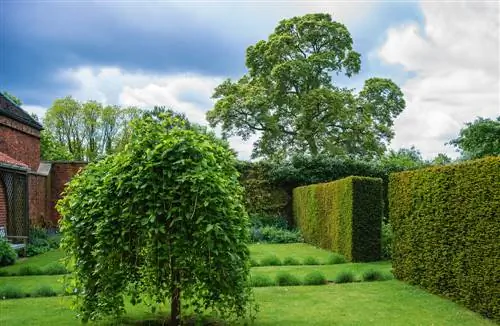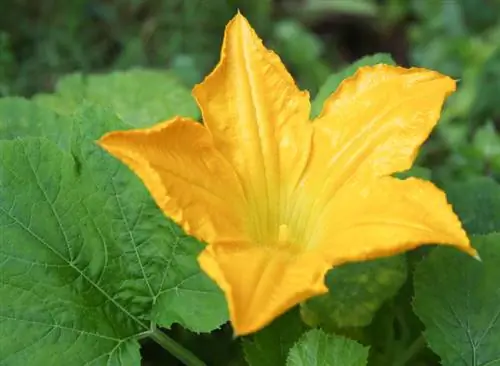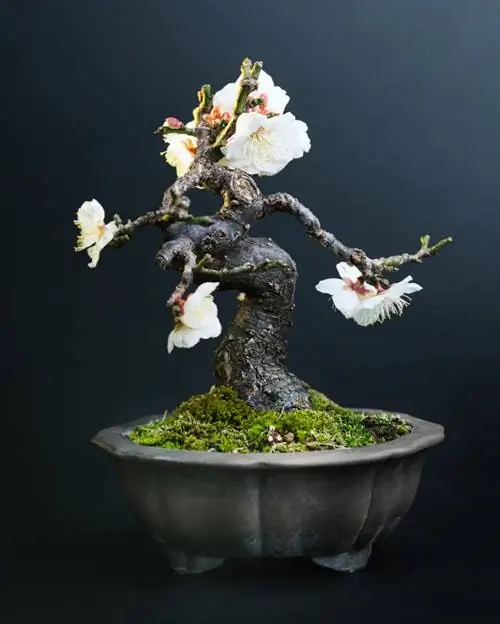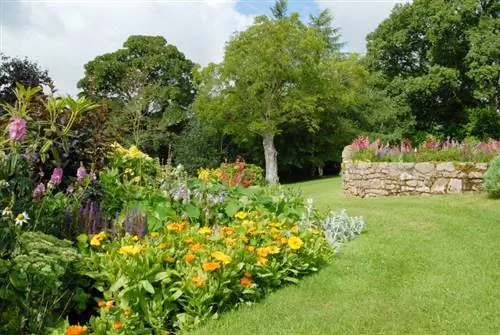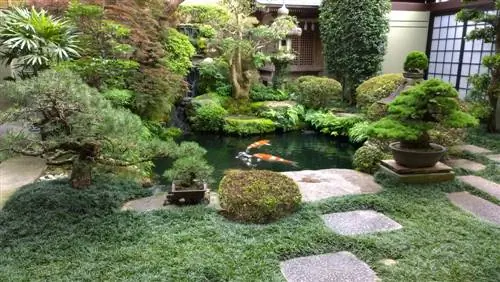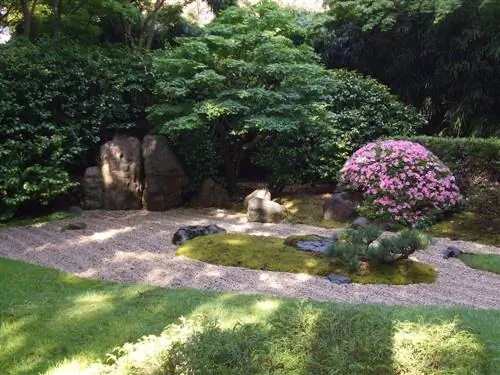- Author admin [email protected].
- Public 2023-12-16 16:46.
- Last modified 2025-06-01 06:02.
The fascinating garden concepts of famous English gardens such as Sissinghurst Castle or Hestercombe Gardens can be transferred to your own garden with a little imagination. Let yourself be inspired by the creative components of the historical garden philosophy and use them to create your very own English garden.
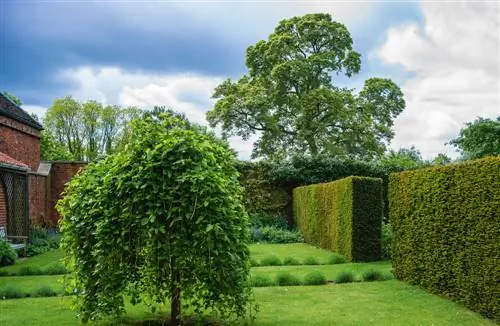
How do I create an English garden?
To create an English garden, you should create garden spaces with hedges, use straight paths and geometric beds, introduce decorative elements and implement different bed themes such as “white garden”, “rose garden” and “cottage garden”. Use natural materials and a weathered look.
Simple elegance meets floral opulence - tips for the basic formal concept
The cult status of English gardens is based on a basic concept from the 18th century, which has since then been continuously developed and refined by the high priests of garden art. The secret of the success of this unique garden style is: gardens within the garden. The following structure still enjoys general acceptance today:
- Each garden space is enclosed with a precisely trimmed hedge of evergreen trees
- Straight paths lead to the beds, seats and design elements
- Beds and lawns have geometric shapes as rectangles, squares or circles
- Statues, fountains, ponds, arbors and benches serve as decorative eye-catchers
This sober floor plan brings calm to the concept, because the separate garden rooms can be lavish and magnificent. Here you can give free rein to your ideas and put your individual stamp on each bed.
Each bed impresses as a unique garden world - planting ideas
The English Garden Sissinghurst Castle serves as a global model for the creative interpretation of the historic garden style. We have summarized the essential elements of the magnificent complex as a collection of ideas below:
The White Garden
The most famous garden room is the White Garden. Magnificent perennials that bloom in all shades of white are gathered around a pavilion covered in white climbing roses. White lilies, hollyhocks, peonies, dahlias and lupins join silvery, shimmering foliage plants such as wool thistles or willow-leaved pears.
The Rose Garden
The legendary rose garden is dominated by historic rose varieties with exuberant growth in beautiful shapes and colors. In June, the summer-blooming beauties transform the English Garden into a fragrant sea of flowers that captivate visitors from all over the world. As a concession to the comparatively short flowering period, the roses are combined with perennials and clematis. This horticultural move extends the splendor of color in this garden world for many weeks.
The Cottage Garden
So that fresh fruit and vegetable enjoyment is not neglected in the English Garden, a cottage garden is a must. Here, ornamental and useful plants thrive side by side. Ideally, heavy feeders, medium feeders and weak feeders should share one bed and change from year to year so that the soil does not become depleted. Small box trees or dwarf privet line the edge of the bed. A herb spiral offers space for sage, oregano, basil, lemon balm and other spice plants.
Tip
The special appeal of English gardens is based not least on the use of natural materials, which can appear slightly weathered over time. Therefore, give preference to natural stones or bark mulch as a path surface. Climbing plants thrive on trellises (€279.00 on Amazon) made of wicker and fired bricks form the garden wall. The goal is a well-groomed appearance that is not perfect.

